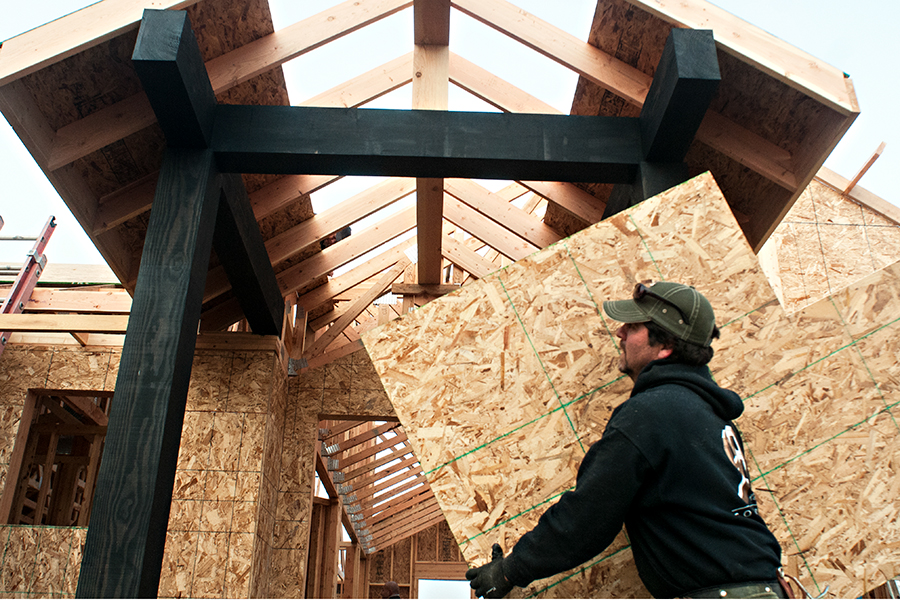As baby boomers transition into retirement and new job markets evolve in a strong economy, Montana is following the nationwide trend of a workforce shortage.
With Montana’s jobless rate at 3.4% as of December 2019, just below the national average of 3.5%, employers are struggling to fill job vacancies due to a low unemployment rate, skillset mismatches and demographic and generational changes, according to economists who spoke at a Feb. 11 seminar in Kalispell by the University of Montana’s Bureau of Business and Economic Research (BBER).
“You might think that having too many jobs and not enough workers is a good problem to have, and it is a good problem to have,” said Patrick Barkey, the director of the BBER. “But it’s a problem nonetheless.”
In 2019, there were 7.3 million unfilled jobs in the country compared to 2.5 million in 2009, according to the Organisation for Economic Co-operation and Development.
But low unemployment isn’t the only factor contributing to the workforce shortage. As baby boomers transition into retirement and leave the workforce, millenials now outnumber them, creating a generational change in the job market.
And as the job market changes nationwide, Montana and Flathead County are following suit, leaving a number of jobs in sectors like construction, tourism, manufacturing and timber vacant.
Norma Nickerson, director of the Institute for Tourism and Recreation Research at the University of Montana, says the summer of 2019 was the worst yet for seasonal staffing shortages. The manufacturing industry has also seen shortages. Surveys conducted by BBER suggest that 50% of manufacturers say finding qualified employees has been their biggest challenge.
Barkey says this is because of the changing workforce.
As baby boomers retire, younger generations aren’t necessarily filling the jobs that they leave behind.
In multiple surveys comparing millenials and Generation Z, who were born from 1996 to 2010, BBER found that Generation Z valued job satisfaction, college education and flexible hours more than millenials. They also discovered that the younger generation is far more interested in technology jobs, and fewer are interested in traditional manual-labor jobs, according to indeed.com.
The change in demographics has created a skillset mismatch, leaving certain generations either unqualified or uninterested.
“You can see the tech workforce is younger and there’s not too many older workers,” Barkey said. “Older workers don’t fit into all the work places.”
While technology jobs continue to attract younger workers, jobs in industries like construction are becoming less attractive. In a survey conducted by homebuilders, only 3% of Generation Z were interested in construction jobs, even if their salary was more than $100,000 per year.
Meanwhile, technology jobs continue to grow nationwide and in Montana.
Technology hubs have already sprouted in Bozeman and Missoula, with companies like Advanced Technology Group (ATG) and onXmaps. Companies are breaking down the geographical barrier that once existed and providing venues in Montana for workers who value a higher quality of life than past generations.
Christina Henderson, the director of the Montana High Tech Business Alliance, says Flathead County is catching up with Gallatin and Missoula counties with tech companies like Applied Materials, ExcelliMatrix and Neuro-ID.
While tech companies are on the rise in the Flathead, employers in other industries are working to recruit employees with attractive perks.
The most obvious method is a wage increase. Montana has already begun paying their employees higher wages, which have grown more than 20% in Flathead County since 2013. Companies are also incentivizing potential employees with attractive benefits like flexible hours, offering remote work and health insurance.
Whitefish Credit Union is experimenting with this method by paying 100% of its employees health insurance.
“We use it to help reward and retain our employees,” Whitefish Credit Union President and CEO Jim Kenyon said.
Because Whitefish Credit Union only started this benefit a year ago, the timeframe is too short to see an impact, but Kenyon has noticed that younger generations don’t care as much about benefits like health insurance compared to older generations.
Employers are also working to recruit future workers, or high school students who aren’t in the workforce yet, especially for manual-labor jobs.
The Kalispell Chamber of Commerce created an initiative called Workforce Flathead, which works with local businesses and educators to promote manufacturing and skills trades, bioscience and technology and tourism, all of which drive the Flathead’s economy.
The BBER expects continued growth in Montana’s economy, with economists forecasting 3% growth in Flathead County between 2020 and 2023. Gallatin County is expected to see 5% growth.
